10. Pitfall (Hiroshi Teshigahara, 1962)
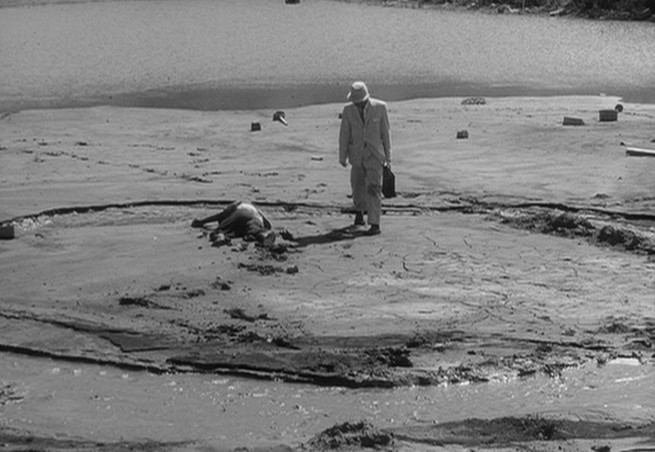
It’s another of Teshigahara’s classics that, for some reason, still seems a bit underrated in the eyes of cinema fans, and is a bit left out from the lists of greats. “Pitfall” is Teshigahara’s first major success, succeeded by the masterpiece “Suna no onna”, and provides a surrealistic view of humankind and its criminal mind. It’s often referred as a failure when compared to the perfect “Suna no onna”, released two years later.
It tells the story of a murder of a coal miner by a mysterious man dressed in white, while exploiting a surrealistic perspective of the dead and the living and the unveiling of the truth. Teshigahara’s genius takes us to accept the dead as major characters in an incredibly written mystery plot, where the ending seems a little too unfair and provides a sense of powerlessness to the viewer of a crime never fairly solved.
9. Mishima: A Life in Four Chapters (Paul Schrader, 1985)
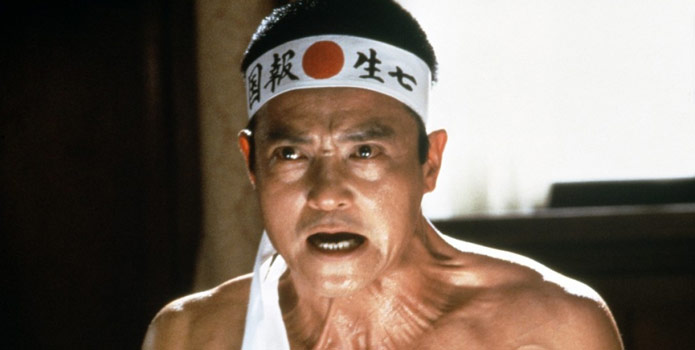
“Mishima: A Life in Four Chapters” is one of those movies that has to be watched if you love cinema; it’s one of the few masterpieces released after 1980, and is a landmark in Japanese cinema. Produced by Francis Ford Coppola and George Lucas and directed by Paul Schrader, it tells the life of Yukio Mishima, one of the most important Japanese novelists and a three time Nobel Prize nominee. The author is sometimes seen as a very haunted man, and although a Prize in his honor has been established in 1988, there are mixed feelings toward his dark past and vision of Japan.
Most of his bibliography is biographical and takes the reader through his anguishes and childhood that wasn’t a happy one, but also his homosexual tendencies that always were repressed by him and compensated with the beautification of the body and the need to control. Mishima is remembered for his seppuku after a failed coup d’état attempt, led by him and accompanied by his private army, mostly formed by young vulnerable men, like he always was.
The fascinating life story of Mishima is shown in the movie with flashbacks to his past, usually in black and white, with the present being shown in color. Also, the movie shows dramatized scenes of some of Mishima’s novels, which may be considered as a “bridge” to most of his life and future actions, such as the failed coup d’état attempt. Also, I’d like to call your attention to its soundtrack, sometimes the backbone and inner piece that joins a cinema masterpiece together, composed by Philip Glass. It is still one of the most creative soundtracks ever created in cinema history.
8. Ugetsu (Kenji Mizoguchi, 1953)
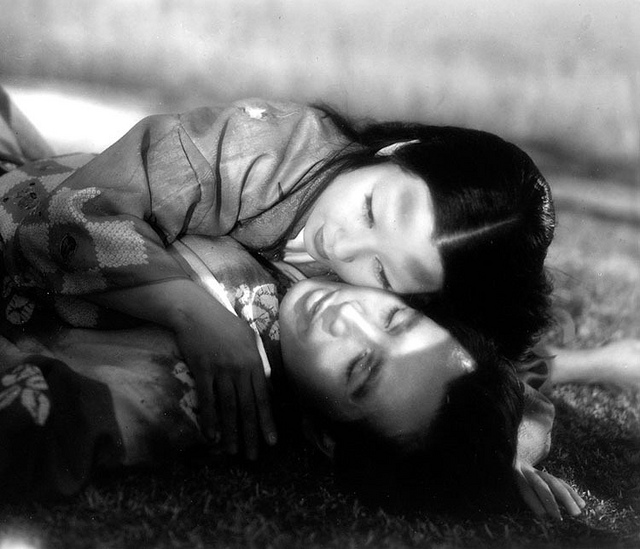
It’s another one of the masterpieces of Japanese cinema and Mizoguchi’s greatest movie, showing a much more emotionally aggressive storyline with very raw elements of psychological violence. It’s referred many times as a ghost story, because there are elements of the existence of a ghost in the story or the appearance of one. Personally, I interpret the ghost as the desires and wrongdoings of the characters that led to the tragic fate of their loved ones. Everyone has ghosts and I think the ghost associated with this movie is mainly the ghosts of oneself. It is a shockingly emotional and quite violent film in its approach to themes such as betrayal, family, childhood, abandonment and survival.
It tells the story of four characters, five if we count the child who actually has a very important role in the action, providing a degree of innocence to a very sordid and obscure turn of events. The four characters are composed by two couples, with one of the couples having a child. Both family men are dreamers and are mislead by their ambition, which ultimately led to the tragic fate of their wives.
One of them wants power and social status, while the other wants to become a samurai. Both reach their goal with fatal consequences to the lives of their loved ones, providing a dramatic turn of events to an initially positive situation, after their escape of the war happening around them.
7. Nobody Knows (Hirokazu Koreeda, 2004)
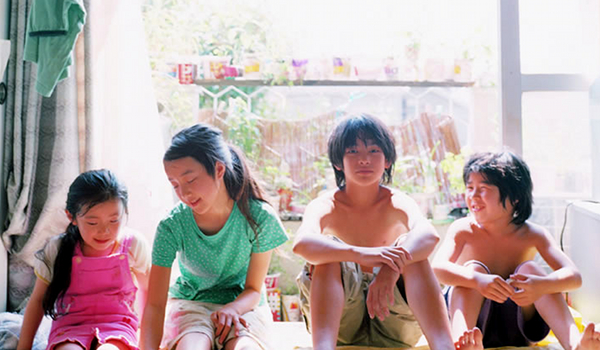
It’s Koreeda’s greatest effort to show Japanese reality and livelihood in an industrial powerhouse. Although “Like Father, Like Son” may compete with “Nobody Knows” as Koreeda’s best movie, “Nobody Knows” reaches that target more easily and effectively with a more interesting and dramatic story of four abandoned children living alone in an apartment.
It is based on a true event, the affair of the four abandoned children of Sugamo that occurred in 1988. More than a dramatization of that event, it is also a critic to the poor conditions many families live in Japan. Although being an industrial powerhouse and one of the richest countries on Earth, Japan still has that inequality problem, where in the poorest places you may find the worst conditions imaginable.
“Nobody Knows” won several awards, including Best Actor, Movie and Director at the 24th Cannes Film Festival. The four children learn to live alone in a confined apartment after being left abandoned by their own mother. The root of the problem comes from the mother, who is a drunkard and unstable. She is exploited by men who are only looking for sex, and because of that most of the four children don’t even know who their father is. The main character is Akira, who is only 12 years old and already the “patriarch” and responsible for their half-siblings’ well-being.
It’s a very disturbing movie, and it surprised me by its realism and harsh dramatization of a very frightening event. On the other hand, it has a certain “infantile” magic and innocence. The kids’ performance is just superb, and is perhaps the best performance by children I can remember in recent years. “Nobody Knows” brings out the best in everyone emotionally, and clears the path of ignorance toward a problem such as this. It’s magical, inspirational, thrilling, surprising and sweet, but also disturbing, sad and sometimes difficult to watch.
6. The Human Condition Trilogy (Masaki Kobayashi, 1959-1961)
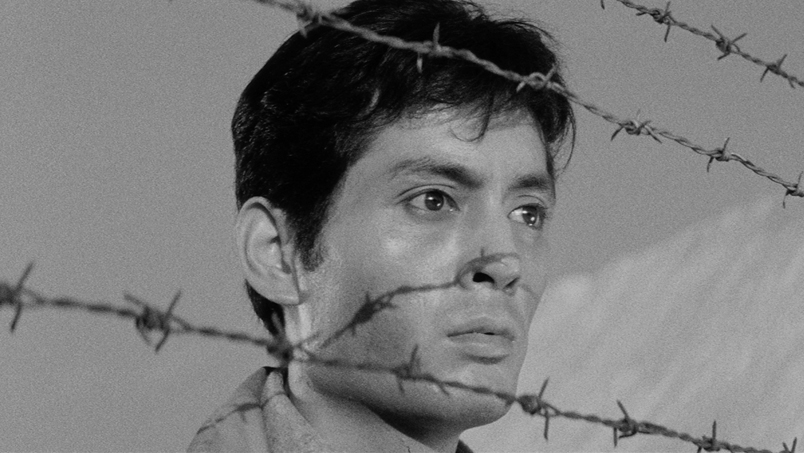
It’s a completely over-the-top production and a perfect depiction of Japan in the Second World War, mostly characterized for his oppressive power and right-wing political system that enslaved most of the supporters of different ideas and those who battled against the system. It stars Tatsuya Nakadai, giving him international fame and marking him as one of the top actors in the Japanese cinema industry.
Also, it brought Kobayashi much deserved international fame, to someone who already had directed classics such as “The Spring” and “Black River”, in 1956 and 1957, respectively. This epic trilogy, a true epic trilogy contrary to most of the so-called cinema sagas, depicts the emotional fight for survival in a oppressive and totalitarian Japan, which was struggling in a “must-lose” war.
The three epic movies, with each running for over three hours, describe the changes in Nakadai’s character from an idealistic human being to a suffering and conformed man, who ends up being tied up to certain ideals in which doesn’t believe. The movies become more and more aggressive; the first one, “No Greater Love”, presents Kaji, a man of ideals, who tries to battle against the system.
The second movie depicts the war itself but also Kaji’s conformation to a reality he doesn’t believe in but can’t overturned. The third and final movie continues the same type of storyline, showing a much more aggressive and harsh reality that starts to penetrate into Kaji’s mind, affecting him profoundly while being unjustly imprisoned and tortured in a prison of war camp.
The movie’s ending shuts down the perfect saga; while some viewers would like a different ending that could benefit Kaji, this ending not only completes a gradual change in Kaji’s mind but also depicts the reality of most of the idealists in a Japan that was oppressive and right-winged, and repressed those who tried to battle against the system.
5. Woman in the Dunes (Hiroshi Teshigahara, 1964)
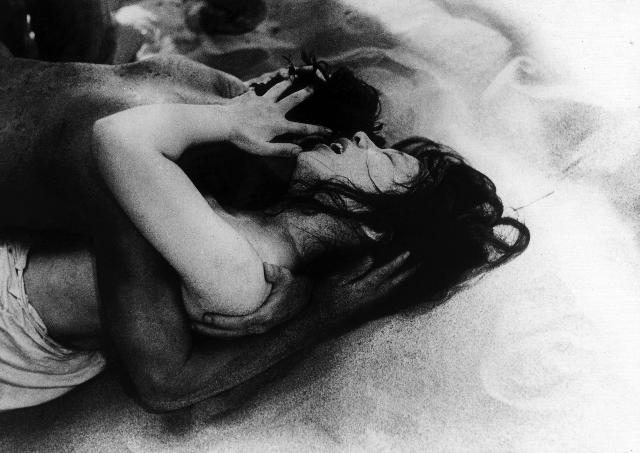
“Woman in the Dunes” is one of my all-time favorites, no doubt about that, and personally I wanted to place it in a higher place, but ultimately Ozu and Kobayashi’s masterpieces completely took over my first thought. This movie is almost perfect and ironically almost became “the death” of the Japanese genius Teshigahara.
The director isn’t very often referred as one of the greats and masters of Japanese cinema, and ironically it’s due to the perfection of this movie. Most of Teshigahara’s releases weren’t accepted at the time of release, and although now they are considered cinema masterpieces, his movies weren’t very well interpreted by the general public. An example of that is the movie “Pitfall” (1962), listed here.
“Woman in the Dunes” became such a success and an instant classic, reaching almost the level of perfection due to its great performances, and an intriguing but also philosophical storyline. The movie’s success really prejudiced Teshigahara’s success in later years, with the audience expecting the same type of movie. That didn’t happen, such is the case of “The Face of Another” (1966), also listed, which presents a much more realistic and urban background that wasn’t at all accepted by the audience.
It’s a completely unusual and perhaps surrealistic movie, presenting, as said by many, a modified version of the human existence. An entomologist is taking an expedition and loses the last bus back to town, in a semi-deserted village surrounded by sand and dunes. The town villagers offer him a place to stay the night and he is sent into a dune where a young widowed woman lives. She has the job of digging the sand, so that her house isn’t buried in the sand, which is always advancing. She performs an endless job, which also may represent the seemingly questionable reason for human existence.
The relationship gets more difficult with the advancement of the story, when the man realizes he isn’t allowed to escape and return to the city. He is obliged to stay with the woman, who from the get-go has a very friendly and caring approach toward the new arrival. Despite the man’s several attempts to escape, he is always denied the escape. A seemingly desperate and needy young woman wants a companion and a man by her side, but most of all someone to accompany her in her enduring and seemingly endless task of digging sand with no end.
It is commonly said that “Woman in the Dunes” presents a metaphorical approach of human existence, and is symbolic to most of mankind’s purpose in life. The endless task may represent the questionable human existence with an unrewarding job and a seemingly futile task that is performed by a needy and very solitaire widowed woman. It may also represent the sense of being lost in society and the need to escape. Others may interpret in a more “political fashion”, a society who imposes is a society who dominates and controls everything, and even the most intelligent and capable may surrender to their obligations and demands.
4. Tokyo Story (Yasujirô Ozu, 1953)
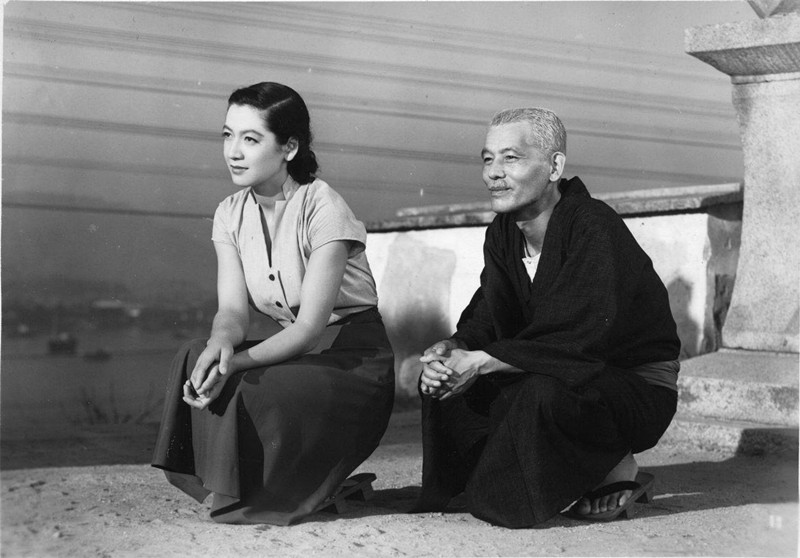
Personally, I always liked to interpret Ozu’s movies as an association to Japanese post-war society and a growing industry and economy. “Tôkyô monogatari”, or “Tokyo Story” in English, transports the viewer to a much closer view to a society that is growing and living faster and faster. Ozu does that using a Japanese family and continuing with the character of Noriko from his trilogy. It was considered the best movie ever made, and for those who are fans of Ozu’s style, innovation and realism, such prize and honor is completely justified in terms of its role in changing dramatic settings and movies with a very realistic background.
It’s simply a story of a family living in a metropolis such as Tokyo. Their parents visit them, but they don’t seem to have time for them, mainly due to lack of time and professional reasons, but also a lack of will and care for someone who fought so much for them. It’s certainly Ozu’s most emotionally “violent” and “controversial” movie. Such adjectives may seem a bit overstated, but they aren’t inaccurately applied, if you watch the movie closely and feel its right beat. Such adjectives may be proven for the fact that their in-laws seem to pay more close attention to the parents of their spouse.
An example of that in-law proximity is Noriko; she married their son, but he died during the war, and still she feels a close proximity towards her in-laws and feels a certain obligation toward them. It also proves the adjectives mentioned above, if you think about the reaction of Noriko and the children’s reaction; when they learn of the mother’s grave illness, the reactions are completely different. One is sadder while the children’s reaction is more apathetic.
Of course, sooner or later the children fear the possibility of their mother’s death, but there is the feeling of being a bit too late and there is a hurry to get over everything. Ironically, it’s Noriko, who isn’t officially a blood relative because she is a widow of their son, who gives them the necessary support and attention and even care. The movie may be seen as a critic of Japanese society and the new fast-paced Japan after World War II, describing harshly its consequences within society and one’s family.
3. Harakiri (Masaki Kobayashi, 1962)
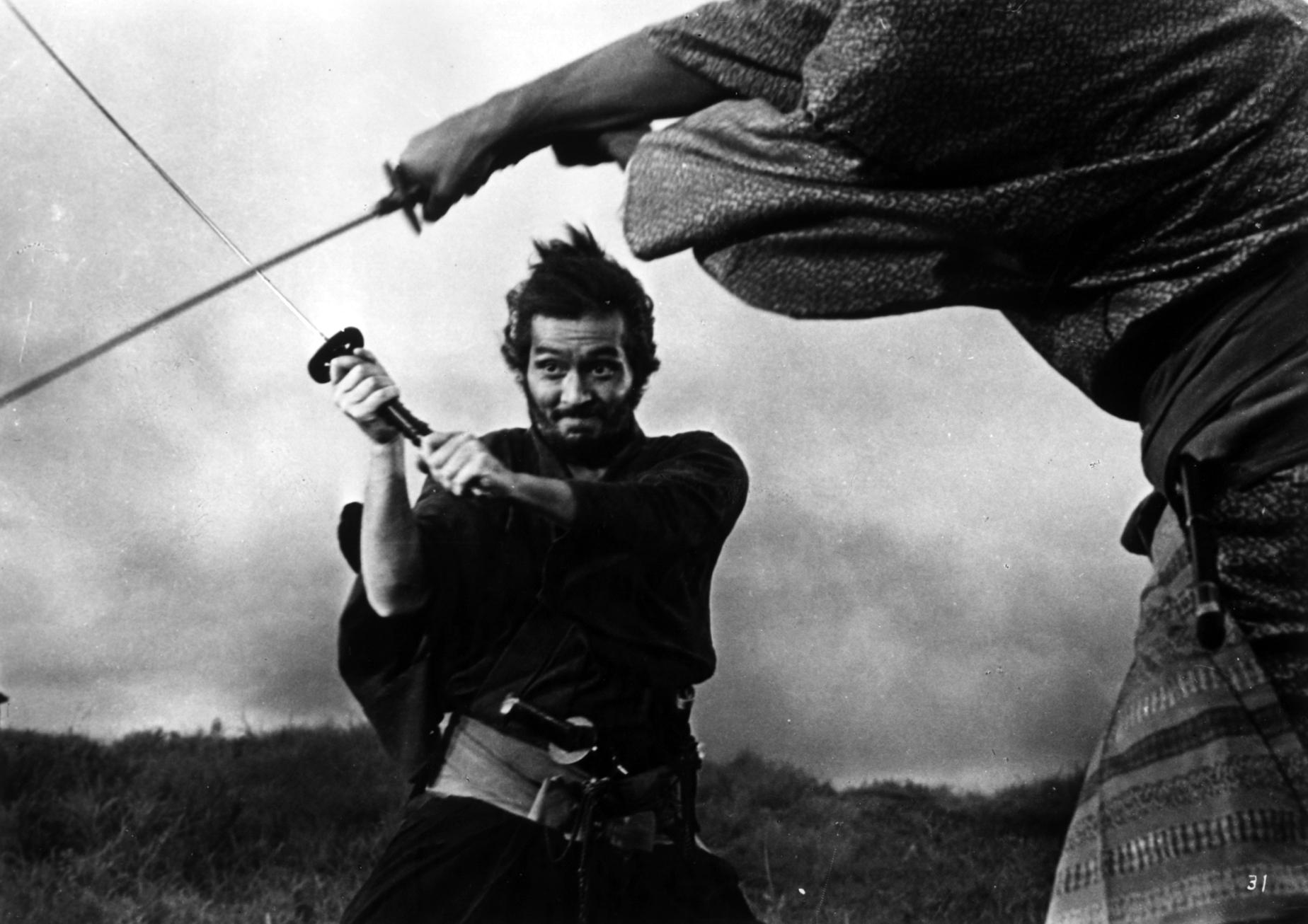
Kobayashi is one of the most influential directors of all time, and although he was surpassed and left behind in comparison to Akira Kurosawa, Kobayashi became one of the top Japanese directors and one of the biggest references of Japanese cinema, mainly if we look to his filmography from the end of the 1950s until 1965.
“Harakiri” is his finest release where the director presents not only a critical look of the samurai code of honor lived in the 1600s, but also a great historical event portrayed by the dramatism of a very well written storyline. At the time, many samurais without a Lord or Master would commit seppuku or hara-kiri, in order to die as true samurais and die with honor, not only to them but also their families.
The movie is, in the beginning, set in 1630 but also takes us back until 1619, with a series of flashbacks told by Hanshirō Tsugumo, portrayed by Kobayashi’s favorite actor Tatsuya Nakadai, who enters in the estate of li clan with the request of committing hara-kiri within the courtyard of their palace. It’s one of best worked storylines on this list, containing great battle scenes and emotional moments, with “a heck of a performance” by Nakadai. Despite being a samurai movie, “Harakiri” contains what makes this type of movies so worthwhile – entangled plot and an understanding of the samurai’s suffering and his code of honor.
2. Rashomon (Akira Kurosawa, 1950)
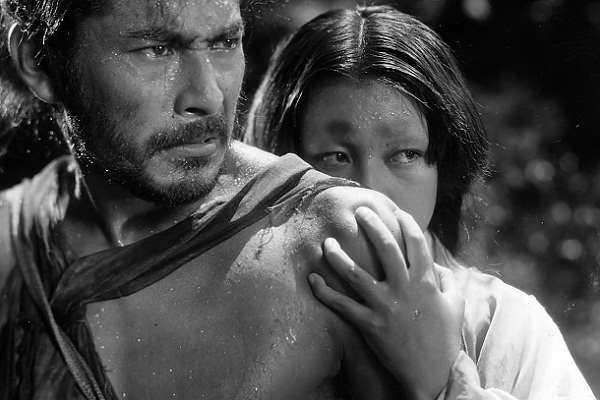
Which is the better movie, “Rashomon” or “Seven Samurai”? It’s still one of the most debatable doubts of the Japanese industry. Personally, “Seven Samurai” beats “Rashomon”, but if it does, it does it for so little. “Rashomon” is another mystery movie, also presenting a very intrinsic in-view of humankind and its defects, regarding a murder situation, while exploiting the human kindness toward the innocent. The movie is a pioneer in the murder movie genre; it’s famous for presenting a series of alternative versions of the same crime, with its characters being quite different in personality and providing different endings to each version.
Although it contains a very allegorical perspective of Japan, “Rashomon” also shows a very realistic perspective, at least in terms of the truth. One of the characters is losing hope in humanity, but wins it back after a show of kindness from another character. It’s a “cry for help”, while also showing a different and original depiction of a murder.
The several versions of the same crime not only give a fresh in-view of an unsolved murder, but also provide a certain light to the emotions of the Japanese people and their country after losing the Second World War. The abandoned baby is reality and the symbol to “stand-up and fight”, protecting those who need it more. Truth is treated almost as a “diseased” word that we never know anything about.
1. Seven Samurai (Akira Kurosawa, 1954)
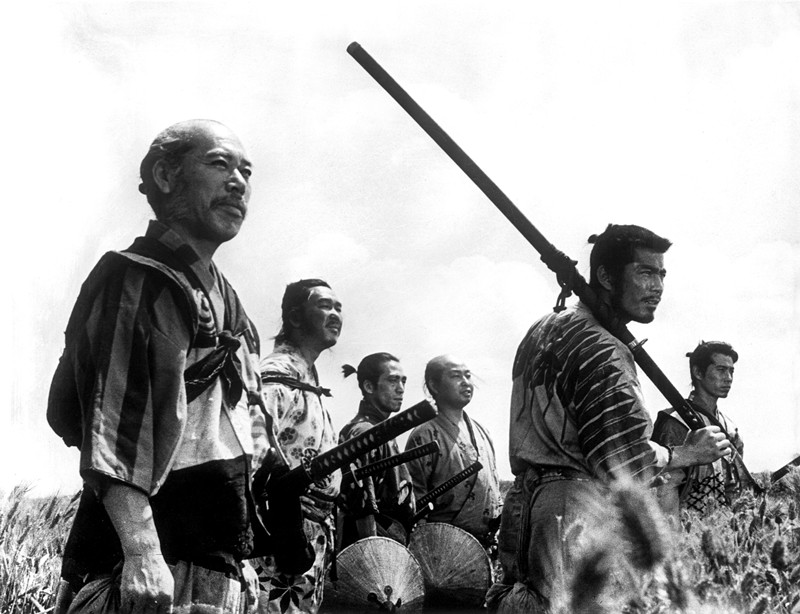
It’s the masterpiece of masterpieces of the Japanese cinema and one of the most referenced and copied movies of all time, serving as inspiration for several of the industry’s movies and its actors and artists. It tells the story of seven masterless samurai who are hired by farmers in order to fight the bandits who steal the crops from the farmers. It runs over 200 minutes long, and it’s still until today one of biggest cinema references and Kurosawa’s greatest release. It stars Toshiro Mifune in his greatest performance, alongside his performance in “Rashomon”, or at least his best-known role on his career.
Although the differences of quality with Rashomon are way too insignificant, “Seven Samurai” still prevails as Japan’s greatest production, not only for its grandiose apparatus and its over-the-top production, but also by its highly historical component and social critic to 16th century Japan. After all the movies were watched, “Seven Samurai” it is still a personal favorite, remaining one of my top favorites on any list of all time greats.
Although “Rashomon” is another of the favorites, and despite the difficulty of choice, “Seven Samurai” is Japan’s finest release due to its degree of influence in cinema, not only Japanese cinema but also industry throughout the world, especially the American industry..
Author Bio: João Braga is a content writer and freelance translator of 5 different languages. His passion for movies began 12 years ago, starting with Bergman, Kurosawa and Truffaut’s movies. He has a “soft spot” for the intelligent and genial French Cinema.